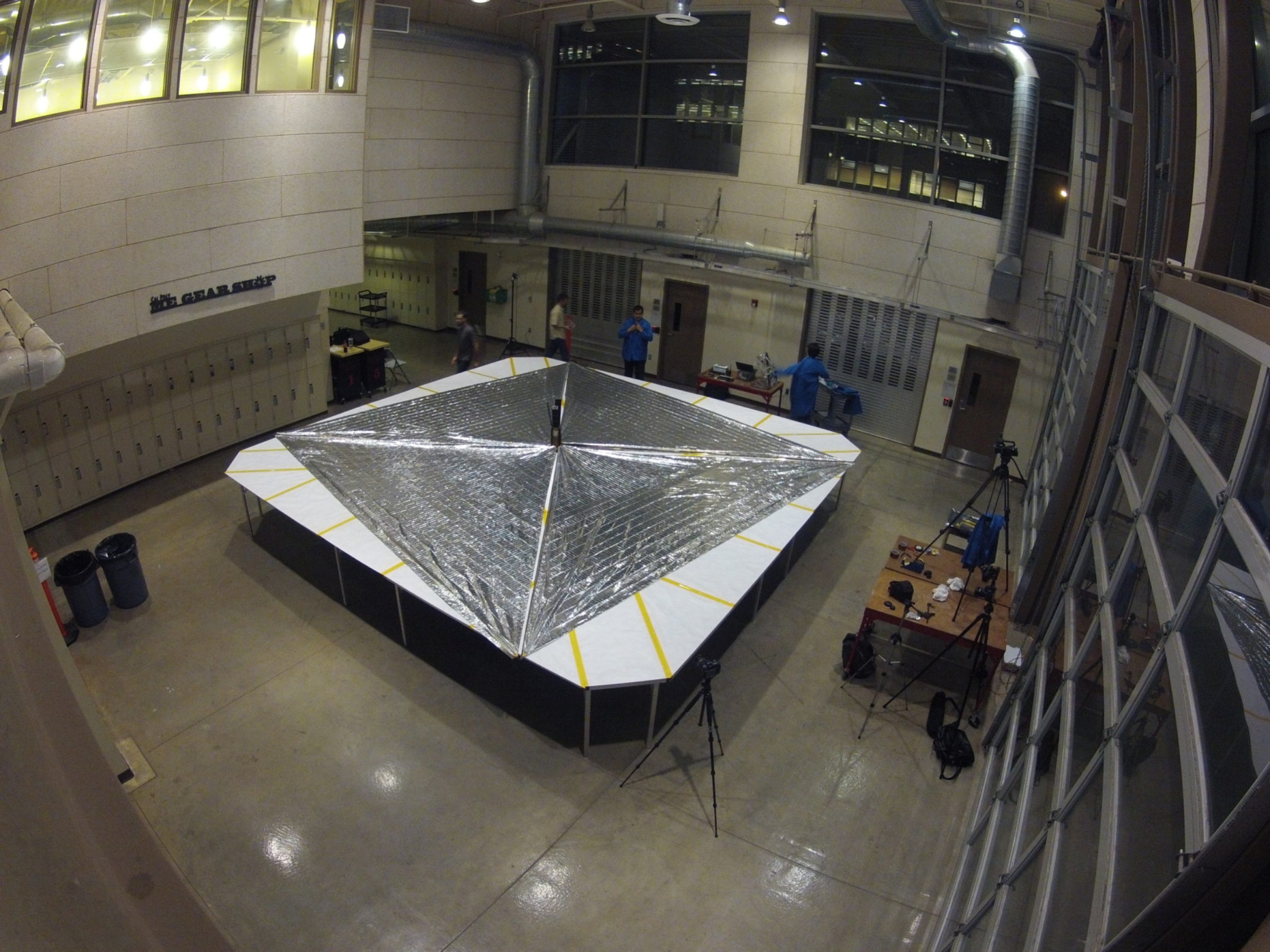Jason Davis • Jun 04, 2015
LightSail Falls Silent; Battery Glitch Suspected
The LightSail test spacecraft has fallen silent for a second time, less than a day after completing what appeared to be a successful solar panel deployment. Mission managers believe the CubeSat's batteries are in a safe mode-like condition designed to protect the electronics until power levels are safe for operations.
In an e-mail summary sent this afternoon, mission manager David Spencer said before contact was lost, LightSail’s batteries did not appear to be drawing current from the solar arrays; nor were they properly shunting power to the spacecraft’s subsystems.
"Following solar panel deployment," he wrote, "it was noticed that all of the battery cells were drawing near zero current. This indicated that the batteries were likely in a fault condition stemming from the solar panel deployment event."
On the next ground station overflight, the team regained contact. But the battery situation remained unchanged, and the spacecraft appeared to have rebooted unexpectedly. "The flight team discussed the option of commanding an emergency solar sail deployment, Spencer said. "However, all ground testing of solar sail deployment had been performed under battery power, with all battery cells online and fully charged. It was considered to be doubtful that the sail deployment could be successfully completed without battery power (relying only upon direct input from the solar cells). The flight team decided to address the electrical power subsystem issue and approach solar sail deployment in a known state consistent with ground testing."
LightSail’s last automated telemetry chirps came in Wednesday at 4:40 p.m. EDT (20:40 UTC). The spacecraft then moved out of range for ten-and-a-half hours. When Thursday’s expected contact time arrived, LightSail was silent.
Good morning from PDT. LightSail had a good night's sleep, and slept in. We haven't heard from it since yesterday at 4:40 pm EDT.
— Jason Davis (@jasonrdavis) June 4, 2015There were 11 ground station overflights today, but LightSail has yet to phone home. Commands were sent "in the blind" to activate the radio system, but there was no status change. The team opted not to command the spacecraft further until the situation is better understood. LightSail’s power system can enter a variety of failsafe conditions based on the behavior of the batteries. Engineers at Ecliptic Enterprises Corporation are working through a complex fault tree to determine the spacecraft's likely state, as well as options for moving forward.
If LightSail is suffering from a chronic undervoltage condition, help could arrive naturally, Spencer said. "The spacecraft orbit is in a geometry where eclipse occurs roughly 2100 seconds each orbit. This is near the maximum eclipse duration that LightSail-A will experience during the mission. Over the next couple of weeks, the orbit will precess to a full-sun condition, where the entire orbit is sunlit."
When contact with LightSail is reestablished, the sail deployment sequence will likely be triggered as soon as battery levels are heathy enough to proceed.

The Time is Now.
As a Planetary Defender, you’re part of our mission to decrease the risk of Earth being hit by an asteroid or comet.
Donate Today

 Explore Worlds
Explore Worlds Find Life
Find Life Defend Earth
Defend Earth

